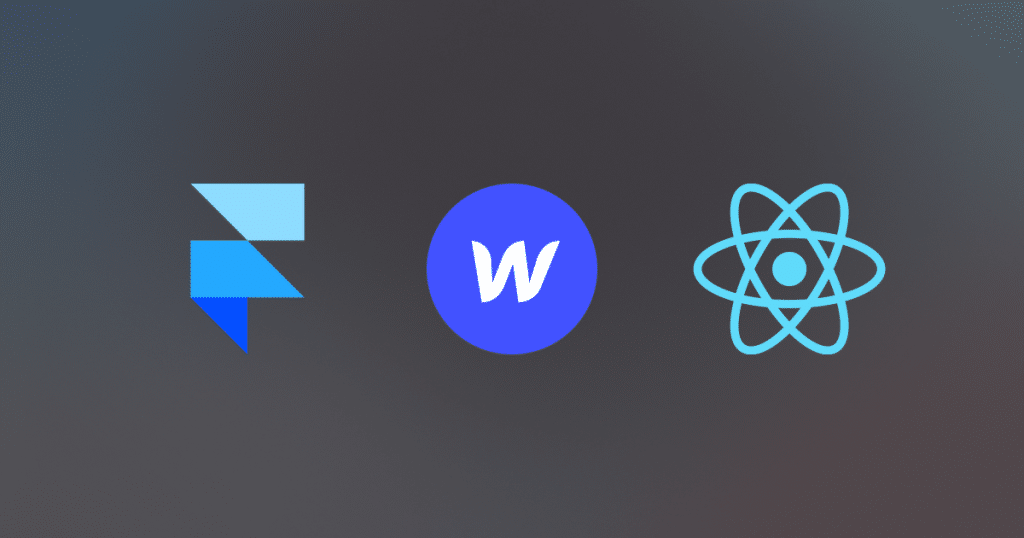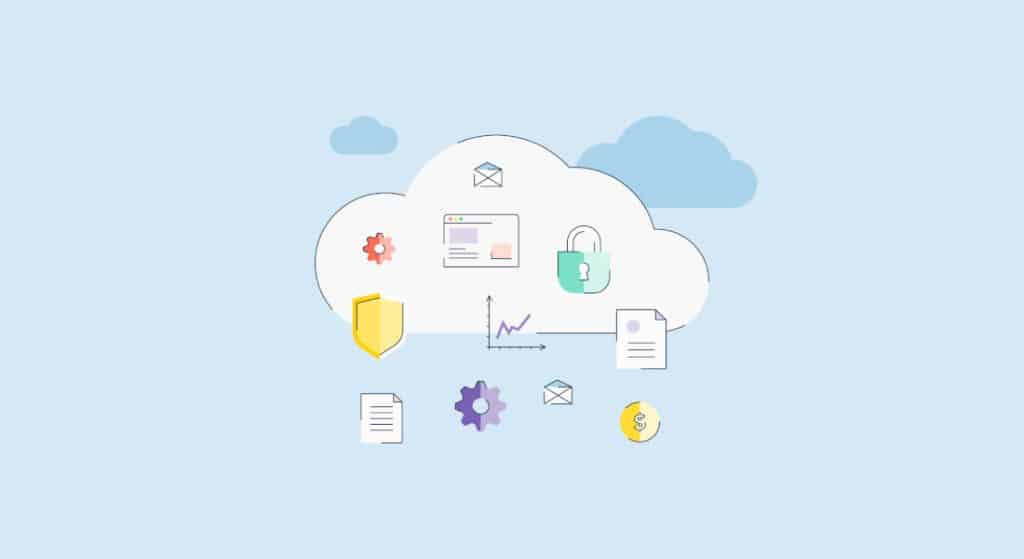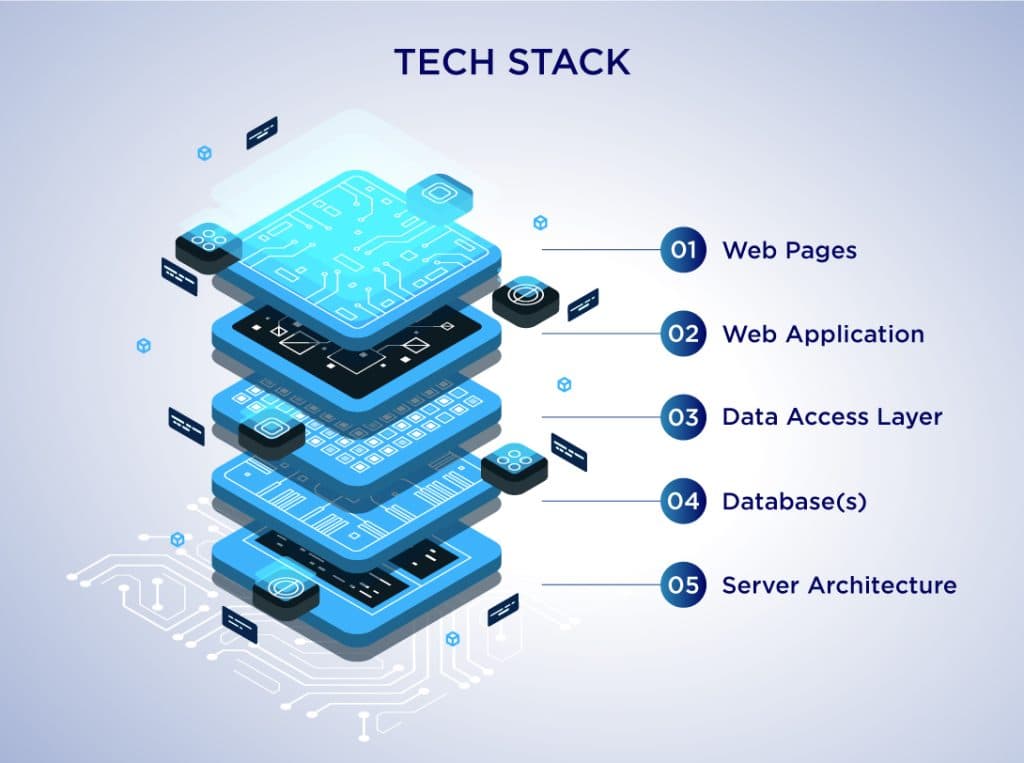In the ever-evolving landscape of business technology, the strategic fusion of Software as a Service (SaaS) platforms has emerged as a critical enabler for organizations aiming to enhance operational efficiency and scalability. As we navigate the complexities of 2024, the convergence of diverse SaaS solutions presents both opportunities and challenges for enterprises looking to streamline their tech stacks. The quest to seamlessly integrate these tools requires a nuanced approach and a keen understanding of the intricacies involved. Stay tuned to unravel the nuanced techniques and trends that can shape the future of SaaS integration and optimize your technological ecosystem in the year ahead.
Understanding SaaS Integration: Key Concepts and Benefits
As businesses navigate the intricate landscape of SaaS integration, understanding the key concepts and benefits is fundamental. This includes grasping what SaaS integration entails and the advantages it brings to streamlining tech stacks. By unraveling these fundamental aspects, organizations can harness the power of SaaS solutions to optimize their operations and stay competitive in the digital age.
What is SaaS Integration? An Introductory Guide
SaaS Integration serves as a fundamental process in modern business operations, facilitating the seamless connection and synchronization of various Software as a Service applications within an organization’s tech infrastructure. When considering SaaS integration, it’s essential to leverage specialized services like saas application development services to ensure a cohesive saas tech stack. Staying abreast of saas trends is crucial to harnessing the full potential of these integrations. Below is a table highlighting key concepts related to SaaS Integration:
| Key Concepts | Description |
|---|---|
| SaaS Integration | Seamless connection and synchronization of SaaS applications within an organization’s tech infrastructure |
| SaaS Application Development Services | Specialized services for developing SaaS applications and integrating them into existing systems |
| SaaS Tech Stack | The collection of SaaS applications and technologies used by an organization to support its operations |
Benefits of Streamlining Your Tech Stack with SaaS Solutions
Enhancing operational efficiency through the strategic integration of SaaS solutions is paramount for modern businesses aiming to streamline their tech stacks effectively. By consolidating various SaaS applications into a coherent ecosystem, organizations can achieve increased productivity, cost savings, and improved collaboration among teams. Streamlining the tech stack with SaaS solutions also enables quicker deployment of new functionalities and easier scalability to adapt to changing business demands. Furthermore, centralized data management and enhanced security measures provided by SaaS integrations contribute to overall risk mitigation and regulatory compliance. Ultimately, the benefits of optimizing tech stacks with SaaS solutions extend beyond operational enhancements to driving innovation and competitive advantage in today’s dynamic market landscape.
Essential SaaS Integration Techniques for 2024
As we look ahead to 2024, businesses must prioritize integrating diverse applications using effective methods and strategies for seamless operations. Automating processes through SaaS integration will be a key focus area for companies aiming to streamline workflows and enhance productivity in the digital era. By mastering these essential SaaS integration techniques, organizations can stay ahead of the curve and maximize the potential of their tech ecosystems.
Integrating Diverse Applications: Methods and Strategies
As businesses navigate the intricate web of diverse applications in 2024, streamlining communication and data transfer is paramount. By integrating various SaaS solutions effectively, organizations can enhance team collaboration and workflow efficiency. These strategies are essential for optimizing operational processes and ensuring competitiveness in the evolving digital landscape.

Streamlining Communication and Data Transfer
To ensure seamless workflow environments and enhance operational efficiency, businesses in 2024 must prioritize streamlining communication and data transfer through effective SaaS integration techniques.
- Implement Real-Time Data Syncing: Ensure that data is synchronized across all integrated SaaS applications instantly.
- Utilize API Integration: Seamlessly connect different applications using robust API integrations.
- Automate Data Transfers: Employ automation tools to facilitate smooth and efficient data transfers.
- Ensure Data Security: Prioritize data encryption and secure protocols to protect information during transfers.
Enhancing Team Collaboration through Integrated SaaS Solutions
In the realm of modern business operations reliant on integrated SaaS solutions, fostering team collaboration through seamless application integration stands as a cornerstone for maximizing productivity and efficiency. By integrating various SaaS tools like project management, communication, and file sharing platforms, teams can work cohesively, share information effortlessly, and streamline workflows. This collaborative approach enhances communication, encourages innovation, and ultimately drives organizational success.
Automating Processes Through SaaS Integration
Enhancing operational efficiency and scalability in today’s business landscape requires mastering essential SaaS integration techniques for automating processes effectively in 2024. Automating processes through SaaS integration can streamline workflows, reduce manual errors, and enhance productivity. To achieve this, consider the following key strategies:
- Workflow Orchestration: Utilize SaaS tools to automate and optimize end-to-end workflows, ensuring seamless process execution.
- Data Synchronization: Implement data synchronization across integrated SaaS applications to maintain consistency and accuracy.
- Event-Driven Automation: Leverage event triggers to automate actions based on specific events, improving responsiveness and efficiency.
- Integration Monitoring: Regularly monitor and analyze SaaS integrations to identify bottlenecks, errors, or areas for optimization.
Choosing the Right Tools for Your SaaS Tech Stack
Selecting the appropriate tools for your SaaS tech stack is paramount for seamless integration and optimal performance. By carefully considering the top tools and platforms available in 2024, businesses can enhance their operational efficiency and data flow. Making informed decisions about the tools that best suit your organization’s needs will be instrumental in ensuring a successful SaaS integration process.
Top Tools and Platforms for Enhancing Your SaaS Tech Stack in 2024
Optimizing your SaaS tech stack in 2024 necessitates strategic utilization of cutting-edge tools and platforms. To enhance your SaaS ecosystem, consider the following top tools and platforms:
- Zapier: Automate workflows by connecting your favorite apps and services without coding.
- MuleSoft: Facilitate data integration across various applications and systems for seamless connectivity.
- Dell Boomi: Streamline complex integrations through a cloud-native platform offering robust capabilities.
- Jitterbit: Accelerate SaaS integration projects with an API-centric approach and pre-built connectors for popular applications.

Happy Digital’s Best Practices for SaaS Application Development Services
Happy Digital’s expertise in SaaS application development services offers valuable insights into the best practices and guidelines for creating robust and efficient SaaS applications. By following these proven practices, businesses can ensure the successful development and deployment of their SaaS solutions, optimizing their performance and user experience. Leveraging Happy Digital’s expertise can help organizations navigate the complexities of SaaS application development and achieve their digital transformation goals effectively.
Developing SaaS Applications: Best Practices and Guidelines
Developing SaaS applications requires adherence to best practices and guidelines to ensure optimal functionality and scalability within the digital landscape of modern businesses. To achieve success in SaaS application development, consider the following key practices:
- Modular Design: Break down the application into smaller, interdependent modules to enhance flexibility and maintainability.
- Scalability Planning: Anticipate future growth and design the application to easily scale with increased demand.
- Security First Approach: Implement robust security measures from the outset to protect sensitive data and prevent breaches.
- Regular Testing and Monitoring: Conduct thorough testing at various development stages and establish continuous monitoring processes to identify and rectify issues promptly.
Emerging SaaS Trends in 2024
As we look ahead to 2024, the integration of AI and Machine Learning technologies into SaaS platforms is poised to revolutionize how businesses operate. These emerging trends promise to streamline processes, enhance decision-making capabilities, and drive innovation across various industries. Understanding the implications and applications of AI and Machine Learning in SaaS will be paramount for organizations seeking to stay ahead in an increasingly competitive digital landscape.
The Role of AI and Machine Learning in SaaS
The integration of AI and machine learning technologies is revolutionizing the landscape of SaaS solutions, shaping the emerging trends in 2024. Leveraging these advanced technologies within SaaS offers a myriad of benefits, enhancing the capabilities of software applications and driving innovation in the following ways:
- Personalized User Experiences: AI algorithms analyze user behavior to tailor interfaces and features to individual preferences.
- Predictive Analytics: Machine learning predicts patterns and trends, aiding in proactive decision-making and resource allocation.
- Automated Workflows: AI streamlines processes by automating repetitive tasks, optimizing efficiency.
- Enhanced Security: Machine learning algorithms fortify SaaS platforms against cyber threats, ensuring robust data protection.
Integration Challenges in SaaS Environments
Integrating multiple SaaS applications poses formidable challenges in navigating data silos and integration bottlenecks within modern business environments. Data silos occur when information is trapped in one system and not easily accessible to others, hindering real-time data flow and decision-making processes. Integration bottlenecks, on the other hand, refer to the points where data transfer between applications is slow or prone to errors, leading to operational inefficiencies. Overcoming these challenges is essential for organizations to unlock the full potential of their SaaS investments and streamline their tech stack effectively.
To visualize the key challenges faced in SaaS integration, the table below provides a concise summary:
| Challenge | Description | Impact |
|---|---|---|
| Data Silos | Information is isolated within individual SaaS applications, limiting data accessibility and sharing. | Impedes real-time data flow and hinders holistic decision-making processes. |
| Integration Bottlenecks | Points of slow or error-prone data transfer between SaaS applications, leading to operational inefficiencies. | Delays in data synchronization can disrupt workflows and impact overall system performance. |
| Compatibility Issues | Differences in data formats, protocols, or APIs among SaaS applications, making seamless integration difficult. | Incompatibility can lead to data loss, errors, and additional development time and costs. |
Optimizing Workflow with Effective SaaS Integration
Navigating the complexities of modern business environments, optimizing workflow through effective SaaS integration is imperative for organizations aiming to overcome data silos and integration bottlenecks. To streamline workflows and maximize the benefits of SaaS integration, consider the following strategies:
- Identify Key Integration Points: Begin by identifying the core areas where SaaS applications need to work together. Understanding these integration points will help in developing a cohesive workflow that enhances efficiency.
- Automate Data Sync Processes: Implement automation tools to ensure seamless data synchronization across different SaaS platforms. Automation reduces manual errors, accelerates processes, and enhances overall workflow productivity.
- Utilize Middleware Solutions: Integrate middleware solutions to bridge the gap between disparate SaaS applications. Middleware acts as a communication hub, facilitating smooth data exchange and process flow between different systems.
- Implement Real-Time Data Monitoring: Incorporate real-time data monitoring tools to track data flow, identify bottlenecks, and optimize workflows continuously. Real-time insights enable proactive decision-making and enhance overall operational efficiency.
Security Considerations in SaaS Integration
Ensuring robust security measures is paramount when implementing SaaS integration to safeguard sensitive data and protect against potential breaches in the interconnected digital ecosystem. As businesses integrate multiple SaaS applications into their tech stacks, they must prioritize security considerations to mitigate risks effectively.
One fundamental aspect of securing SaaS integration is data encryption. Encrypting data both in transit and at rest helps prevent unauthorized access and ensures that sensitive information remains confidential. Implementing strong encryption protocols across all integrated systems and platforms adds an extra layer of protection against cyber threats.
In addition to encryption, implementing robust access controls is essential. By defining user permissions, roles, and authentication mechanisms, organizations can restrict access to sensitive data and functionalities based on individual roles and responsibilities. This granular control not only enhances security but also helps maintain compliance with data protection regulations.
Regular security audits and assessments are also critical in ensuring the integrity of SaaS integration. Conducting routine checks and vulnerability assessments can help identify and address security gaps proactively. By staying vigilant and proactive in monitoring security measures, businesses can fortify their SaaS integration against potential cyber threats and breaches, thus safeguarding their critical data assets.
How SaaS Integration Influences Customer Experience
As businesses embrace the complexity of integrating multiple SaaS applications for enhanced operational efficiency and security, it becomes evident that SaaS integration significantly shapes and elevates the overall customer experience.
- Improved Personalization: Through SaaS integration, businesses can gather data from various touchpoints to create a unified view of the customer. This allows for personalized interactions and tailored solutions, ultimately enhancing customer satisfaction and loyalty.
- Seamless Omnichannel Experience: SaaS integration enables businesses to unify customer interactions across different channels such as websites, mobile apps, social media, and customer support platforms. This seamless omnichannel experience ensures consistency and convenience for customers.
- Efficient Issue Resolution: By integrating SaaS applications that streamline customer service processes, businesses can resolve issues faster and more effectively. This leads to improved customer satisfaction and retention rates.
- Enhanced Communication: SaaS integration facilitates real-time communication between businesses and customers. Whether through automated notifications, personalized messages, or instant support features, enhanced communication fosters stronger relationships and boosts overall customer experience.

Future of SaaS: Predictions and Innovations
The landscape of Software as a Service (SaaS) is poised for transformative advancements as technological innovations continue to reshape the future of digital solutions. Looking ahead to the future of SaaS in 2024 and beyond, several key predictions and innovations are expected to drive the evolution of this industry.
One prominent trend is the increasing adoption of artificial intelligence (AI) and machine learning (ML) technologies within SaaS platforms. These advanced capabilities enable SaaS applications to offer more personalized and predictive features, enhancing user experiences and operational efficiencies. AI and ML algorithms can analyze vast amounts of data to provide valuable insights, automate tasks, and streamline decision-making processes.
Another significant innovation on the horizon is the continued expansion of low-code and no-code development platforms in the SaaS space. These tools empower non-technical users to create custom applications and workflows without extensive programming knowledge, democratizing software development within organizations. By simplifying the process of building and deploying software solutions, low-code and no-code platforms accelerate digital transformation initiatives and enable rapid innovation.
Furthermore, the integration of Internet of Things (IoT) capabilities into SaaS offerings is anticipated to revolutionize industries such as manufacturing, healthcare, and logistics. By connecting IoT devices to SaaS applications, businesses can collect real-time data, optimize operations, and drive proactive decision-making. This convergence of IoT and SaaS technologies opens up new possibilities for automation, analytics, and enhanced connectivity in the digital ecosystem.
Comprehensive Software Development Solutions
Unlock the potential of digital transformation with our bespoke software development services, engineered to foster innovation, maximize efficiency, and catalyze business growth.
Conclusion
In conclusion, mastering SaaS integration techniques is crucial for businesses to enhance operational efficiency and stay competitive in the ever-evolving technological landscape of 2024. By understanding key concepts, adopting essential techniques, selecting the right tools, and considering security and customer experience implications, organizations can streamline their tech stack and optimize workflow. As SaaS trends continue to evolve, businesses must stay vigilant and adapt to future innovations to harness the full potential of their digital assets.
How Can Organizations Measure the ROI of Saas Integration Efforts?
Organizations can measure the ROI of SaaS integration efforts by analyzing key performance indicators such as increased productivity, cost savings from streamlined processes, enhanced data accessibility, improved customer satisfaction, and accelerated time-to-market, ultimately quantifying the overall impact on business outcomes.
What Are Some Common Pitfalls to Avoid When Implementing Saas Integration Techniques?
Common pitfalls to avoid when implementing SaaS integration techniques include inadequate planning, lack of clear communication among teams, neglecting data security measures, overlooking scalability requirements, and failure to regularly review and optimize integration processes for efficiency and effectiveness.
How Can Companies Ensure Data Privacy and Compliance When Integrating Multiple Saas Applications?
To ensure data privacy and compliance when integrating multiple SaaS applications, companies should implement robust encryption protocols, conduct regular security audits, adhere to relevant regulations such as GDPR and HIPAA, and establish clear data governance policies across all integrated platforms.


